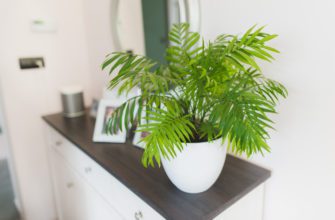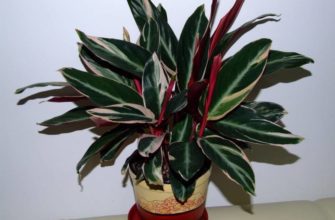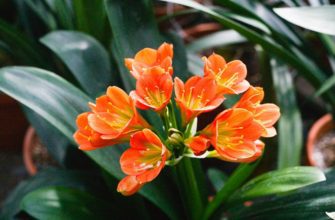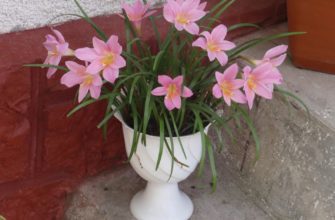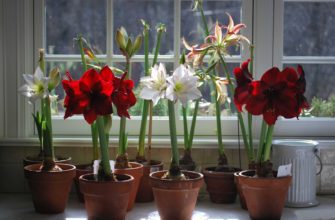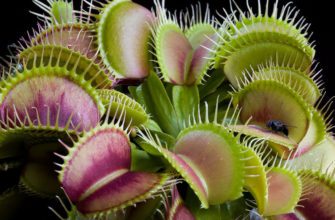Calathea flower is one of the most attractive and popular indoor plants. Its unique and colorful leaves, various shapes and bright color variations make it an ideal decoration for the interior of any home or office. Calathea attracts attention with its unusual beauty and requires some special care to maintain its shine and health.
In this article, we will consider calathea in all its aspects: from the description of the flower and the characteristics of different varieties to home care and methods of its propagation. We will learn how to create optimal conditions for the plant to flourish and what problems may arise during its cultivation.
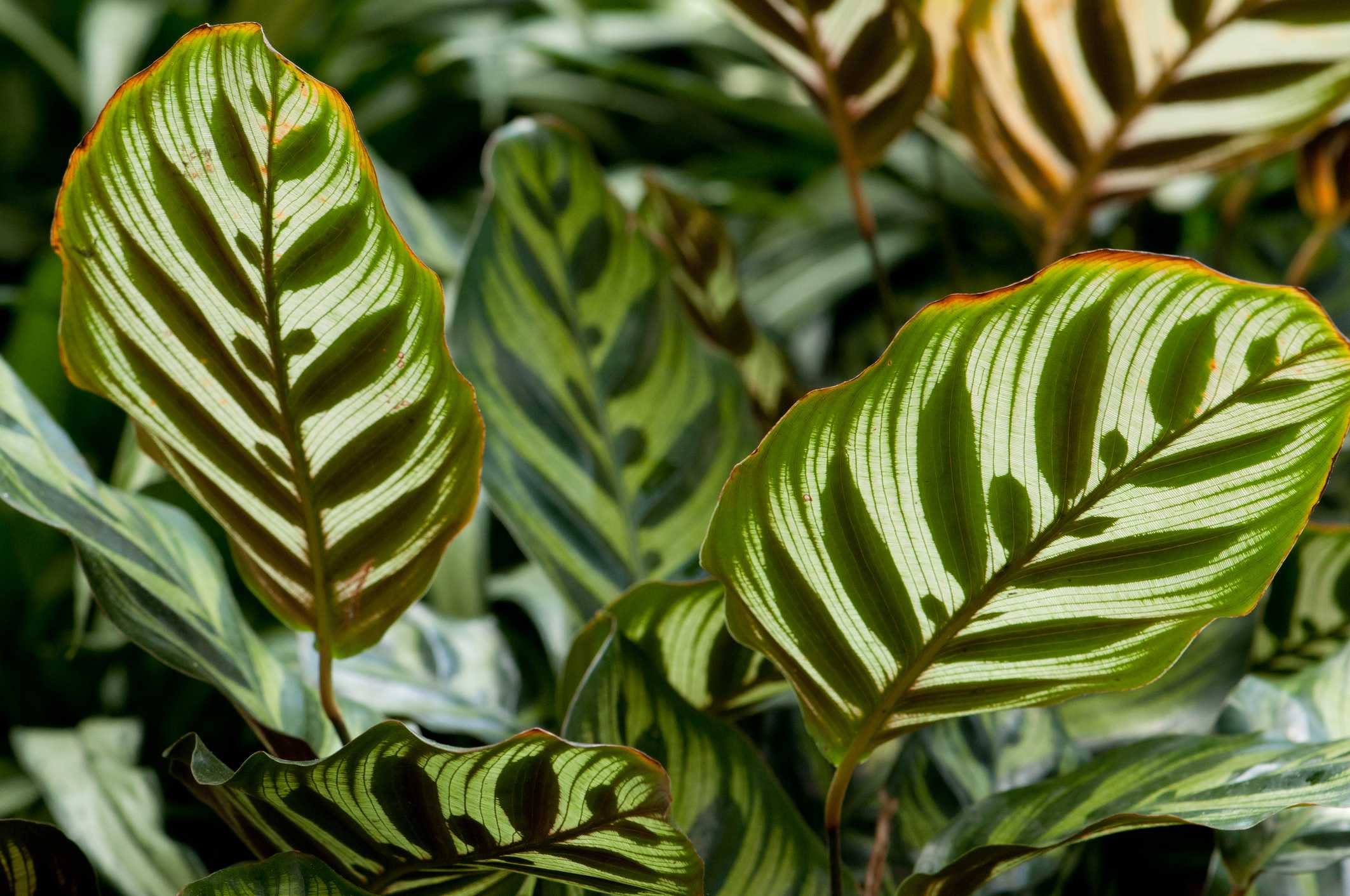
Popularity of Calathea as a Houseplant
Calathea has certainly earned its popularity as a houseplant due to its unique beauty and characteristics. Its appeal lies not only in the graceful shapes and color combinations of its leaves, but also in its ability to create a special atmosphere indoors.
One of the main benefits of calathea as a houseplant is its ability to purify the air from various harmful substances. As you know, indoor air can be polluted with various toxins such as formaldehyde, benzene, xylene and others, which can evaporate from furniture, carpets, paints and other sources.
Calathea flower has a unique ability to absorb these harmful substances and convert them into safer substances, providing cleaner and fresher air in the room.
Another benefit of calathea is its ability to humidify the air. It does a great job of adding moisture to the environment, especially during periods of dry air, which can be especially useful during the winter months or in rooms with central heating or air conditioning.
In addition to its health benefits, calathea is also renowned for its aesthetic appeal. Calathea leaves come in a variety of shapes and sizes, and their surface can be decorated with patterns, stripes, or spots of various shades of green, as well as bright colors such as purple, pink, or orange.
This diversity makes calathea an ideal decorative element, capable of adding a lively and bright accent to any room. Another reason for the popularity of calathea is its relative unpretentiousness and ease of care.
Although calathea may require certain conditions to thrive, such as adequate light, maintaining optimal humidity and temperature, it can be successfully grown even indoors without much effort. Calathea becomes a reliable and amazing plant that can give its owner beauty and pleasure without unnecessary care.
All these factors combine to make calathea a popular choice for indoor plant lovers. Not only is it a gorgeous piece of furniture, but it is also a useful aid in creating a healthy and pleasant atmosphere in the home. If you want to add living beauty to your space and take care of your well-being, calathea will be the perfect addition to your houseplant collection.
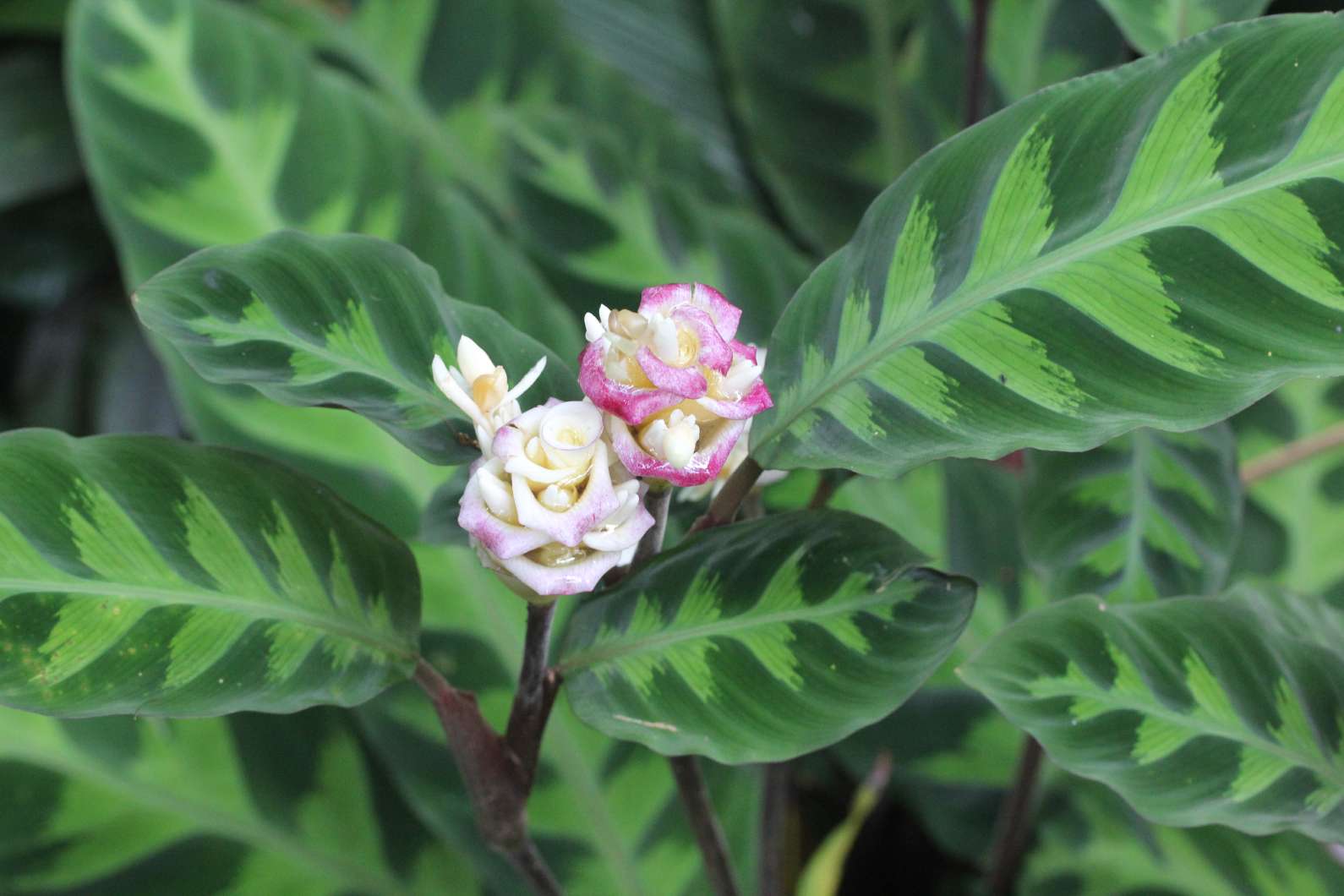
Description of the appearance and characteristics of the calathea flower
Calathea is one of the most beautiful and intricate plant species known to man. Its round, fleshy foliage, sparkling with vitality due to its unique green coloring, looks like a real work of art. Some varieties of the plant can reach a height of up to 1 meter.
Calathea flower is unique with its proud and elegant appearance. The bell-shaped form of the flower creates a feeling of summer lightness and freshness. Specific colors of calathea make it unforgettable and distinguish it from other plants - flowers can be colored differently in purple, blue, pink, yellow and green.
And they can also have different patterns and spots that look like a real puzzle. One of the main features of the calathea flower is intelligence and sensitivity.
Some varieties of Calathea have leaves that curl up at night and unfurl in the morning when daylight comes, giving the plant a unique appearance.
In conclusion, the calathea flower is an exceptionally beautiful, unique and attractive plant that can decorate any interior and bring warmth and comfort to it. It maintains a favorable atmosphere in the room, neutralizing harmful substances and adding oxygen to the air.
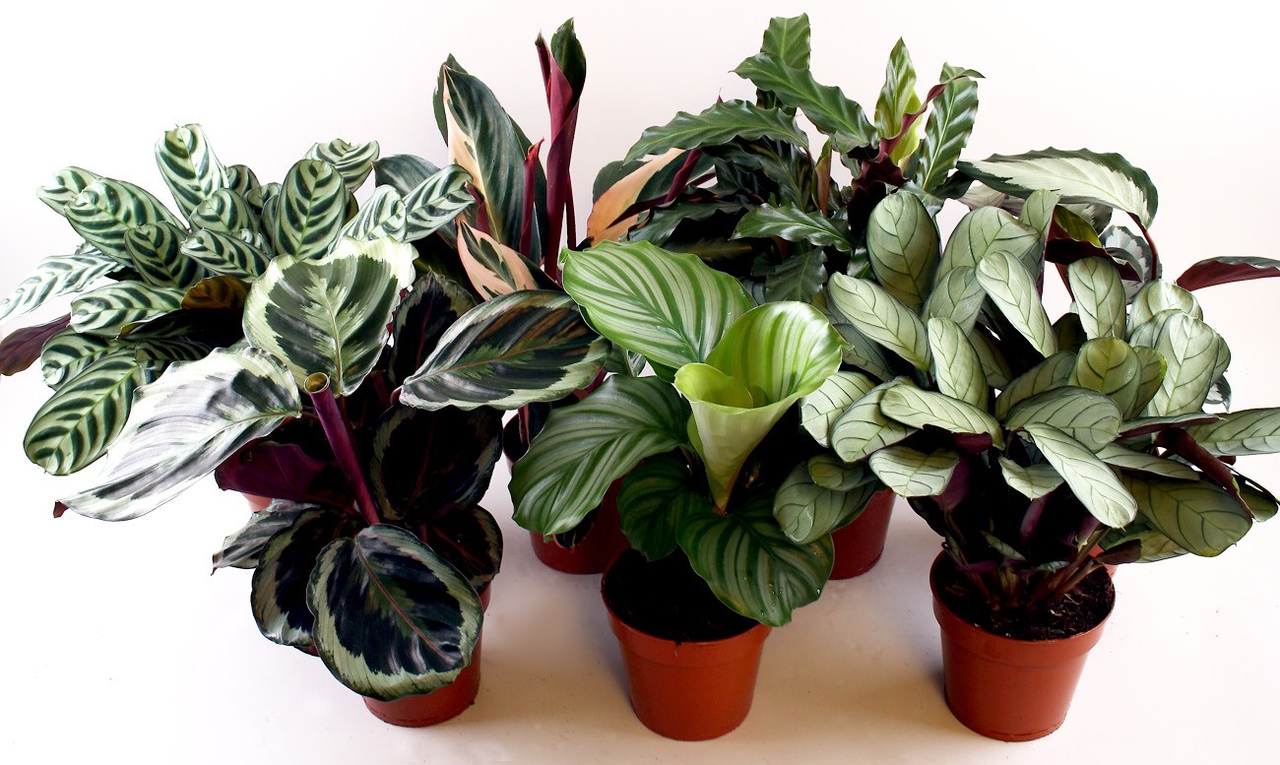
Benefits of Choosing Calathea as a Houseplant
Calathea is an amazing indoor plant, the choice of which for decorating your home or office has a number of advantages. Let's consider some of them in more detail:
- Aesthetic appeal: Calathea is known for its unique beauty and graceful leaves. Its leaves come in a variety of shapes, sizes and color combinations, making each Calathea unique. They can be decorated with stripes, spots or patterns in different shades of green, as well as brighter colors such as purple, pink or orange. Due to its beauty, Calathea becomes a great decorative element that can bring freshness and liveliness to any room.
- Air purifying properties: Calathea is one of the plants that can actively cleanse indoor air from various harmful substances. It is able to absorb toxins such as formaldehyde, benzene, xylene and others that may be present in the air due to various sources such as furniture, carpets or paints. Calathea not only absorbs these harmful substances but also converts them into safe substances, providing a healthier atmosphere in your home.
- Air humidification: In addition to its air-purifying properties, calathea is also an effective humidifier. It is able to release moisture through its leaves and humidify the surrounding environment, which is especially useful during periods of dry air, winter months, or in rooms with central heating or air conditioning. This helps maintain comfortable humidity levels and healthy skin, and reduces the risk of problems associated with dry air, such as eye irritation or dry mucous membranes.
- Unpretentiousness and ease of care: Calathea, despite its sophistication, is relatively low maintenance. It can thrive in medium light conditions and does not require direct sunlight, making it ideal for a variety of areas in the home. Additionally, calathea does not require frequent watering and can tolerate some dryness between waterings. However, for optimal results, it still needs to be provided with a stable moisture level and avoid the soil from drying out.
- Positive impact on mood: Calathea has the ability to create a cozy and pleasant atmosphere in the room. Research shows that having plants around us can reduce stress, improve mood and improve overall well-being. Calathea, with its attractive appearance and ability to create clean air, helps to create a harmonious and pleasant environment in the home.
Choosing calathea as a houseplant offers many benefits that combine its aesthetic appeal, health benefits, and ease of care. This plant not only decorates your interior, but also creates a healthy and pleasant atmosphere in your home or office.
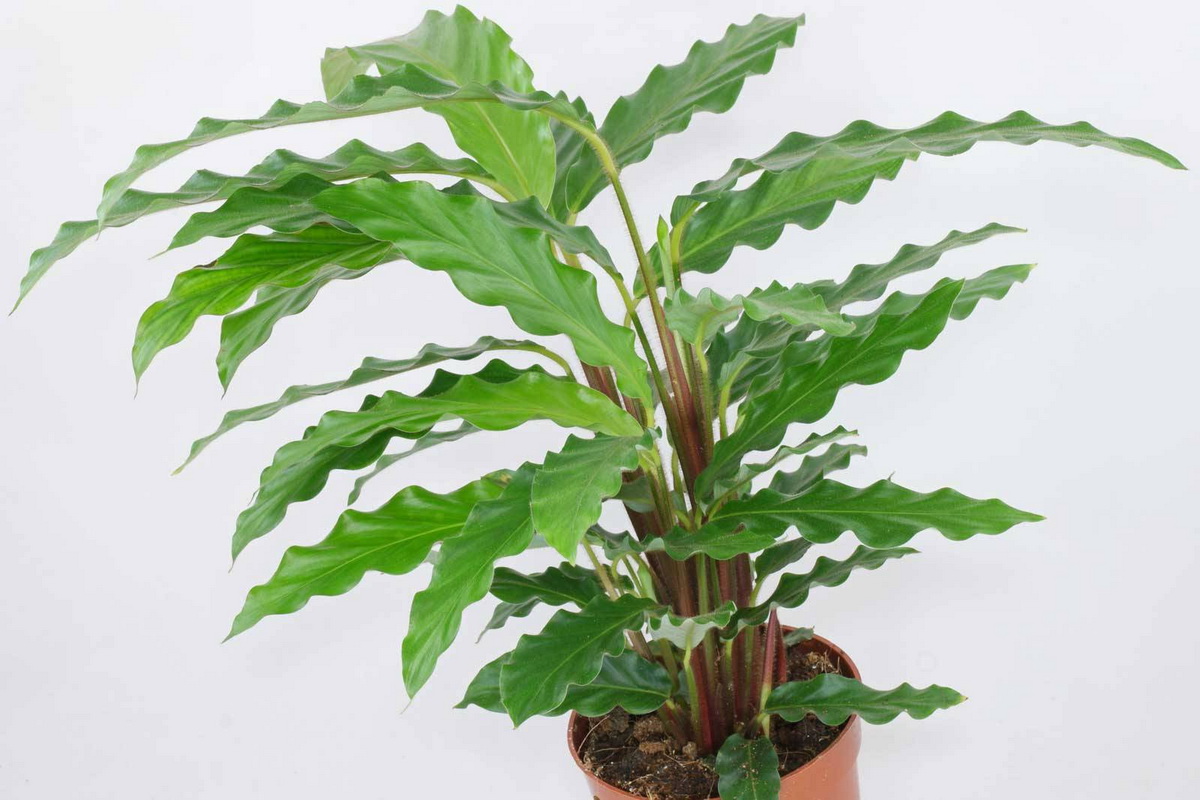
Calathea care
Calathea is an unusually beautiful plant, which has been loved since ancient times for its bright and original foliage. It can add uniqueness and elegance to your interior, but in order to maintain its beauty and health, proper care is necessary.
- Lighting. Calathea loves bright diffused light, but does not tolerate direct sunlight, so do not place it in places where it will receive a sunny day. Do not forget that densely leafed plants do not tolerate loss of light and quickly react to transplantation.
- Temperature. Calathea tolerates temperatures no lower than 18-20 degrees Celsius. It loves humidity, but should not be kept in a room with too much humidity, so that fungi do not appear.
- Watering. Calathea prefers regular moderate watering, in the dry season the plant is watered more often, in winter it is watered moderately. Stagnant, settled water is good. You should try not to overwater the flower.
- Moisture. It is important that the calathea is provided with humid air, which can be created by spraying the plant with soft and purified water.
- Fertilizer. This type of plant will respond well to fertilization in spring and summer.
- Top dressing. In winter, you don’t need to feed calathea, because the plant needs a break to conserve its strength.
- Transfer. This should be done every 1-2 years. Change the soil and transplant into a new pot.
- Trimming. If the calathea has noticeably strong vegetation, you can trim the stems and leaves.
Thus, calathea is suitable for beginner gardeners and does not require special efforts or skills.
Its relative unpretentiousness and unique appearance make it a wonderful decorative element that can become an adornment for any home or office.
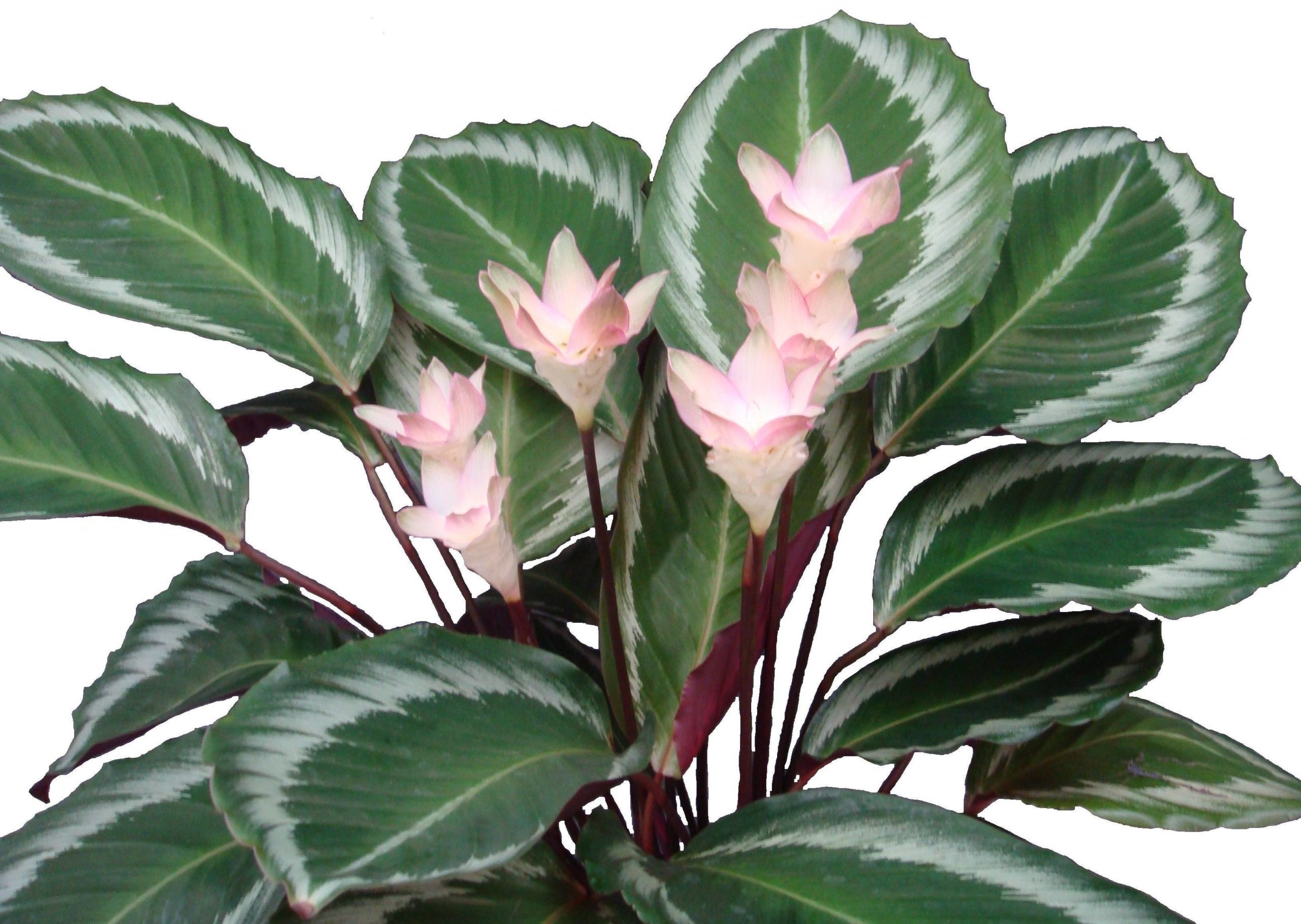
Calathea blooming
The flowering of calathea is one of its main advantages. The colorful flowers of calathea create a unique image of the plant, which easily attracts the attention of others.
Flowering usually begins in spring and lasts until autumn. During flowering, a brush of purple, pink, red and white flowers appears in the center of the calathea. In addition, even brighter spots may appear, glowing with a deep blue hue.
The plant is completely covered with flowers, creating a magnificent effect. Calathea flowering can last from 4 to 8 weeks, depending on the types of cold and warm conditions. During flowering, it is important not to overwater, as this can lead to wilting of the flowers.
After flowering, calathea goes into a dormant period. During this time, the plant requires less watering and less fertilizing.
If you want your calathea to bloom longer and more abundantly, it needs to be provided with the necessary lighting, sufficient humidity, regular fertilization and proper care in general.
It is also important to remember to periodically replant the plant, which will help it develop healthily and prolong its life. It is important to note that to achieve beautiful flowering of calathea, it is necessary to create optimal conditions for maintenance, nutrition and care depending on the variety and species of this plant.
If you take into account all the recommendations, then the delightful flowers of calathea will delight you and your loved ones throughout the entire flowering period.
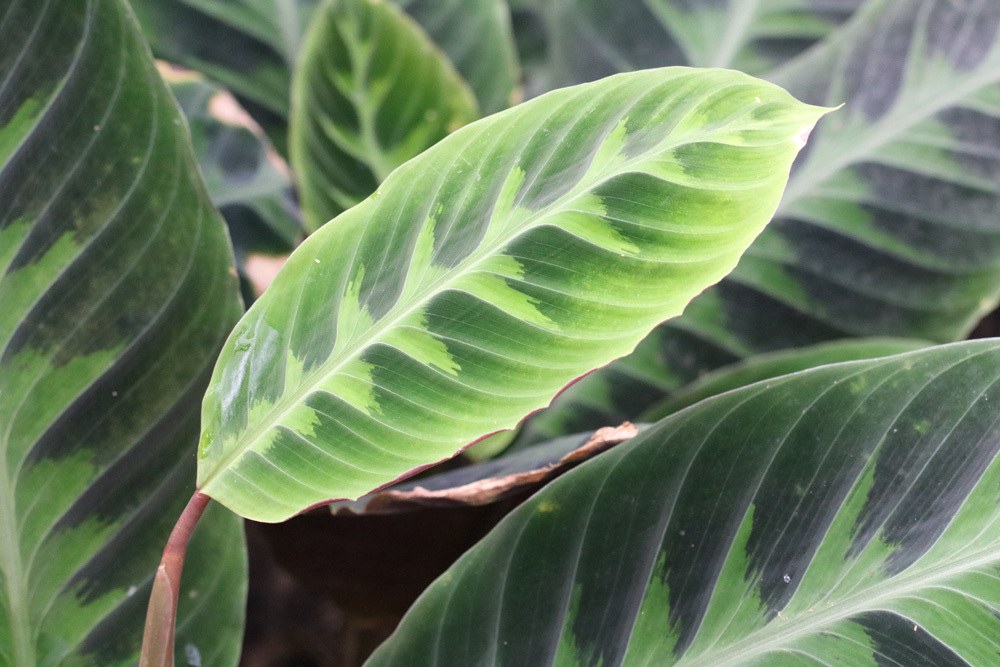
Propagation of Calathea
Propagating calathea can be a fun and rewarding process. There are several propagation methods, including tuber division, cuttings, and leaf sucker propagation. Each of these methods has its own characteristics and requires specific conditions for successful reproduction of calathea.
- Dividing tubers: This method of propagation involves dividing the calathea tubers into two or more parts. For this, mature and healthy plants that have several tubers are selected. The plant is carefully removed from the pot, and then the tubers are divided with a sharp and clean tool. Each part should have several roots and shoots. The divided tubers are planted in separate pots with suitable soil and provided with proper care. Dividing the tubers is usually done in spring or early summer, when the plant is actively growing.
- Cuttings: Cutting is another common method of propagating calathea. For this, healthy and not dried out calathea stems are selected. The upper part of the stem with a separate leaf or several leaves is cut at an angle and placed in a glass of water or a prepared substrate mixture for rooting. It is important to maintain the substrate moisture and provide heat and light for the cuttings. After rooting, the cuttings can be transplanted into separate pots.
- Propagation by leaf suckers: Calathea can also be propagated by forming leaf suckers. In this case, a healthy and mature calathea leaf is selected, carefully cut off at the base and placed in a glass of water or a substrate mixture for rooting. After some time, small shoots with roots begin to appear from the base of the leaf. When the shoots reach a certain size and have enough roots, they can be transplanted into separate pots.
It is important to note that during the propagation of calathea, certain conditions must be provided to increase the chances of successful reproduction. Humidity and temperature play an important role in this process.
Maintain high humidity around the propagating plants, for example by covering them with plastic bags or using a greenhouse. It is also important to provide sufficient light, but avoid direct sunlight to avoid overheating or burning.
Propagating calathea is an exciting process that allows you to get new plants and expand your collection. Choose the method that is most convenient for you and follow the instructions to ensure the success of propagation. By following the right methods and providing optimal conditions, you can get healthy and beautiful calathea plants.
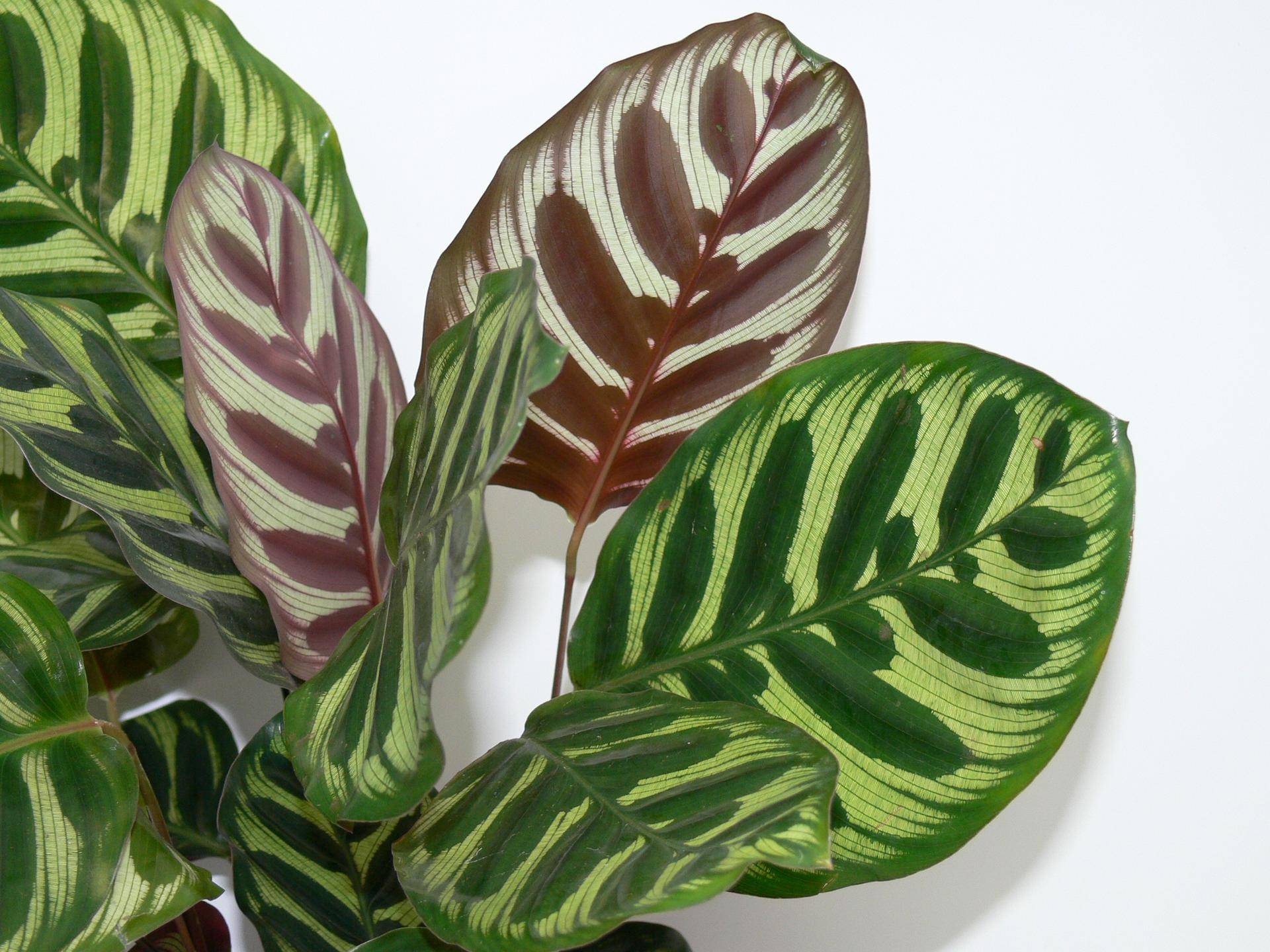
Calathea varieties
Calathea is a plant with a huge number of different varieties and hybrids, differing in color, size and shape of leaves, as well as the degree of hiding power of flowers and the bush as a whole. Let's consider the most popular varieties of calathea:
- Calathea makoyana — is an ornamental plant with round leaves and unusual green coloring with white stripes on each leaf. It has proven itself as an excellent choice for people who are looking for something unusual in plants for home use.
- Calathea warscewiczii — is a rare species of calathea that has beautiful leaves with dark green tones and copper leaves. It is very decorative and requires moderate care.
- Calathea rufibarba — is a plant with large leaves and a rounded shape, which is distinguished by its rich green color with a red girdling on the bottom of each leaf. Its unusual appearance makes it an excellent choice for interiors.
- Calathea medallion - This is another wonderful type of calathea that has spectacular, wide leaves with dark green coloring and sharp pink stripes on each leaf. Its incredible appearance makes it a popular choice for home decor.
- Calathea Havana (Calathea rufibarba) — this is a plant with very long leaves and a unique green color with purple shades. This calathea is quite difficult to care for, which makes it a real find for experienced gardeners.
- Calathea lancifolia — is a beautiful plant with arrow-shaped leaves and a beautiful green color with white sticky stripes. It is quite easy to care for and is an excellent choice for home interior decoration.
Thus, each variety of calathea has unique features and has its own advantages. Choose plants depending on your desires and possibilities, and also take into account the conditions of maintenance and care, so that your calathea will please you with its unique appearance for a long time!
Calathea diseases and problems
Like any plant, calathea can face some diseases and problems. Let's look at some common problems that calathea can face, as well as ways to prevent and treat them:
- Over-dried or over-watered soil: Incorrect watering can cause problems with calathea. If the soil is too dry, the leaves may curl or wilt. On the other hand, overwatering can cause the roots to rot and the leaves to turn yellow. It is important to establish a proper watering schedule, keeping the soil moderately moist between waterings and avoiding overwatering or overdrying.
- Infestation by aphids and other pests: Calathea can be a target for pests such as smoldering insects and spider mites. These can cause the leaves to wilt, curl, or turn yellow. Pest control can be achieved by using mild soap and water to wash the insects off the plant, and insecticides may be needed for severe infestations. Regular inspection of the plant can help detect and prevent pests.
- Leaf spots and rot: Calathea can suffer from various fungal infections that appear as leaf spots or rot. This can be caused by too much humidity or poor air circulation. It is important to provide good ventilation and avoid excess humidity. If an infection does occur, it is recommended to remove the affected parts of the plant and apply a fungicide to prevent the infection from spreading.
- Yellowing of leaves: Yellowing of calathea leaves can be caused by a variety of factors, including nutrient deficiencies, too much sunlight, or overwatering. It is important to provide the plant with proper nutrition, maintain optimal lighting conditions, and regulate watering.
- Problems with roots: Calathea roots may suffer from rotting or soil overload. This may be caused by improper watering or using unsuitable soil. If problems with the roots are detected, it is recommended to replant the plant in new soil, trim off rotten roots and provide the correct watering regime.
Regular inspection and care of calathea will help prevent many diseases and problems. It is important to provide it with optimal growing conditions, the correct watering regime, good ventilation and suitable soil. If problems arise, they must be promptly identified and measures taken to treat them.

